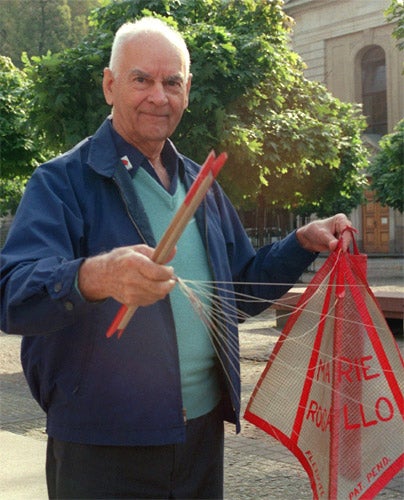Francis Rogallo: Engineer whose work paved the way for hang-gliders

For enthusiasts in the United States and around the world of hang-gliding, para-gliding and simple kite-flying, Francis Rogallo was akin to a patron saint. For more than three decades he was an engineer at Nasa, but he achieved lasting fame as the inventor of the flexible wing, the light single frame airfoil that effectively created the modern sport of hang-gliding.
Rogallo was not the first in the field – Leonardo da Vinci has left designs of a very similar craft – but his story is scarcely less romantic. He and his wife Gertrude were obsessed by the idea of a superlight wing that would allow individual personal flight at very low cost. They conducted experiments at home, using a fan and a wind tunnel made from cardboard, developing a prototype in 1948 with pieces cut from a kitchen curtain that Gertrude stitched together.
The couple believed their device could open the way to new forms of transport, but initially his employer – the National Advisory Committee for Aeronautics, later to become Nasa – was not interested. Instead, they took out patents and developed their idea as an up-market, triangular shaped kite built with Mylar, a super-strong, ultra thin polyester developed by DuPont in 1952. Even this was only a modest commercial success, at $4 vastly more expensive than the standard cloth kites that sold for a few cents. Eventually, Rogallo donated the patent to the federal government in order that the technology might at least be available to as many people as possible.
In 1957 however, everything changed with the Soviet Union's launch of Sputnik. The space race was on and the US was trailing. Rogallo's flexible wing was suddenly seen as a means of bringing space capsules back down to earth more precisely and more safely than a conventional parachute. He came to lead a 100-man design team, and at one point was summoned to a meeting with Werner von Braun, the transplanted Nazi who led the US rocket programme. Eventually Nasa dropped the idea in favour of a re-designed parachute – but thanks to the publicity generated by the testing of the device a whole range of new sports would be born.
The great virtue of the flexible wing as an aerodynamic structure is its exceptionally light weight, coupled with manoeuvrability at very low speeds, and independent designers in the US and beyond soon realised its recreational potential. One of them, Barry Palmer, built the first para-glider in 1961 embodying the new wing; soon a group of Australian inventors were developing a version that would allow water skiers to soar aloft, towed behind a motorboat. In a 1954 article for an in-house Ford Motor Company magazine, Rogallo had speculated that men one day might walk to the top of hills and jump off into the sky. Even he cannot have imagined his prophecy would be so quickly and spectacularly fulfilled.
Today the US alone boasts some 50,000 hang-gliding devotees. Nasa might have termed the device a "parawing". But for years the sport's enthusiasts called it "Rogallo's wings", while members of the US Hang Gliding and Para Gliding Association are known simply as "Rogallo members". His invention of 1948 was the inspiration for a whole range of unpowered flying devices, also including ultra-light recreational aircraft, sports parachutes, delta and parafoil kites, snow kites, stunt kites and many more.
In 1963, Nasa made a special award to Rogallo of $35,000 – at that point the largest of its kind – for the flexible wing patents he had donated a decade earlier. In 1970 he retired after more than three decades at the agency and, fittingly, went to live at Kitty Hawk, North Carolina, where Wilbur and Orville Wright, after experimenting with various glider-like devices, had made the first powered flight. For many years he was regularly to be seen out on the dunes with his red and white hang-glider, making his last flight on his 80th birthday on 27 January 1992.
Rupert Cornwell
Francis Melvin Rogallo, US aeronautical engineer: born Sanger, California 27 January 1912; married Gertrude Sugden (deceased 2008, three daughters, one son); died Southern Shores, North Carolina 1 September 2009.
Subscribe to Independent Premium to bookmark this article
Want to bookmark your favourite articles and stories to read or reference later? Start your Independent Premium subscription today.

Join our commenting forum
Join thought-provoking conversations, follow other Independent readers and see their replies